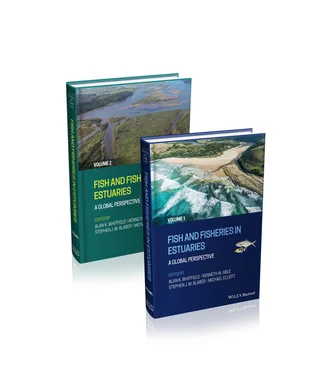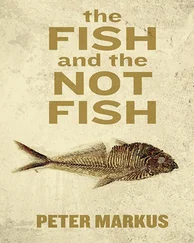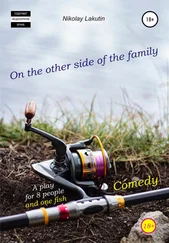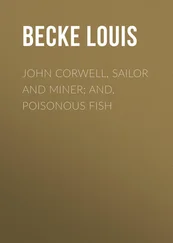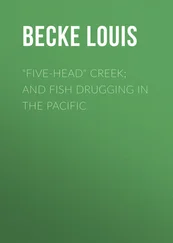307 Halliday, I.A., Robins, J.B., Mayer, D.G., et al. 2008. Effects of freshwater flow on the year‐class strength of a non‐diadromous estuarine finfish, king threadfin (Polydactylus macrochir), in a dry‐tropical estuary. Marine and Freshwater Research 59, 157–164.
308 Haltuch, M.A., Brooks, E.N., Brodziak, J., et al. 2019. Unraveling the recruitment problem: a review of environmentally‐informed forecasting and management strategy evaluation. Fisheries Research 217, 198–216.
309 Harden‐Jones, F.R. 1968. Fish Migration. Edward Arnold, London.
310 Harding, D., Nichols, J.H. & Tungate, D.S. 1978. The spawning of plaice (Pleuronectes platessa L.) in the southern North Sea and English Channel. Rapports et Procès‐verbaux des Rèunions, Conseil International pour l’Exploration de la Mer 172, 102–113.
311 Hare, J.A. & Able, K.W. 2007. Mechanistic links between climate and fisheries along the east coast of the United States: explaining population outbursts of Atlantic croaker (Micropogonias undulatus). Fisheries Oceanography 16, 31–45.
312 Hare, J.A., Alexander, M.A., Fogarty, M.J., et al. 2010. Forecasting the dynamics of a coastal fishery species using a coupled climate‐population model. Ecological Applications 20, 452–464.
313 Hare, J.A., Churchill, J.H., Cowen, R.K., et al. 2002. Routes and rates of larval fish transport from the southeast to the northeast United States continental shelf. Limnology and Oceanography 47, 1774–1789.
314 Hare, J.A. & Cowen, R.K. 1993. Ecological and evolutionary implications of the larval transport and reproductive strategy of bluefish (Pomatomus saltatrix). Marine Ecology Progress Series 98, 1–16.
315 Hare, J.A. & Govoni, J.G. 2005. Comparison of average larval fish vertical distributions among species exhibiting different transport pathways on the southeast United States continental shelf. Fishery Bulletin U.S. 103, 728–736.
316 Hare, J.A., Quinlan, J.A., Werner, F.E., et al. 1999. Larval transport during winter in the SABRE study area: results of a coupled vertical larval behaviour – three‐dimensional circulation model. Fisheries Oceanography 8, 57–76.
317 Hare, J.A., Thorrold, S., Walsh, H., et al. 2005a. Biophysical mechanisms of larval fish ingress into Chesapeake Bay. Marine Ecology Progress Series 303, 295–310.
318 Hare, J.A., Walsh, H.J. & Wuenschel, M.J. 2005b. Sinking rates of late‐stage fish larvae: implications for larval ingress into estuarine nursery habitats. Journal of Experimental Marine Biology and Ecology 330, 493–504.
319 Harris, S.A. & Cyrus, D.P. 1996. Larval and juvenile fishes in the surf zone adjacent to the St Lucia Estuary mouth, KwaZulu‐Natal, South Africa. Marine and Freshwater Research 47, 465–482.
320 Harrison, A.J., Walker, A.M., Pinder, A.C., et al. 2014. A review of glass eel migratory behaviour, sampling techniques and abundance estimates in estuaries: implications for assessing recruitment, local production and exploitation. Reviews in Fish Biology and Fisheries 24, 967–983.
321 Harrison, T.D. & Cooper, J.A.G. 1991. Active migration of juvenile grey mullet (Teleostei: Mugilidae) into a small lagoonal system on the Natal coast. South African Journal of Science 87, 395–396.
322 Hasenbein, M., Fangue, N.A., Geist, J., et al. 2016. Assessments at multiple levels of biological organization allow for an integrative determination of physiological tolerances to turbidity in an endangered fish species. Conservation Physiology 4, 1–16.
323 Hastings, P.A. & Petersen, C.W. 2010. Parental care, oviposition sites, and mating systems of blennioid fishes. In: Reproduction and Sexuality in Marine Fishes: Patterns and Processes (ed. Cole, K.S. ), pp. 91–116. University California Press, Berkeley, CA.
324 Hata, M. & Otake, T. 2019. Downstream migration and mortality of larval ayu (Plecoglossus altivelis altivelis) on the Sanriku coast, northern Japan. Environmental Biology of Fishes 102, 1311–1325.
325 Healey, M.C. 1985. Juvenile Pacific salmon in estuaries: The life support system. In: Fish Community Ecology in Estuaries and Coastal Lagoons: Towards an Ecosystem Integration (ed., Yanez‐Arancibia, A. ), pp. 415–428. UNAM Press, Mexico.
326 Heath, M.R. 1992. Field investigations of the early life stages of marine fish. Advances in Marine Biology 28, 1–174.
327 Heikinheimo, O., Pekcan‐Hekim, Z. & Raitaniemi, J. 2014. Spawning stock–recruitment relationship in pikeperch Sander lucioperca (L.) in the Baltic Sea, with temperature as an environmental effect. Fisheries Research 155, 1–9.
328 Helbig, J.A. & Pepin, P. 1998. Partitioning the influence of physical processes on the estimation of ichthyoplankton mortality rates. II. Application to simulated and field data. Canadian Journal of Fisheries and Aquatic Sciences 55, 2206–2220.
329 Hendrey, G.R. 1987. Acidification and anadromous fish of Atlantic estuaries. Water, Air and Soil Pollution 35, 1–6.
330 Herzka, S.Z. 2005. Assessing connectivity of estuarine fishes based on stable isotope ratio analysis. Estuarine, Coastal and Shelf Science 64, 58–69.
331 Herzka, S.Z., Holt, G. & Holt, S.A. 2002. Stable isotope ratios as tracers of migration during the early life stages of marine fishes. Fisheries Science 68(Supplement 1), 182–185.
332 Hickford, M.J.H. & Schiel, D.R. 2011. Population sinks resulting from degraded habitats of an obligate life‐history pathway. Oecologia 166, 131–140.
333 Hickford, M.J.H. & Schiel, D.R. 2016. Otolith microchemistry of the amphidromous Galaxias maculatus shows recruitment to coastal rivers from unstructured larval pools. Marine Ecology Progress Series 548, 197–207.
334 Hicks, D.C. & Miller, R.J. 1980. Meteorological forcing and bottom water movement off the northern New Jersey coast. Estuarine and Coastal Marine Science 11, 563–571.
335 Hilborn, R. & Walters, C.J. 1992. Quantitative Fisheries Stock Assessment: Choice, Dynamics and Uncertainty. Chapman and Hall, London.
336 Hildebrand, S.F. & Schroeder, W.C. 1928. Fishes of Chesapeake Bay. Bulletin of the U.S. Bureau of Fisheries 43, 1–366.
337 Hill, A.E. 1991. Vertical migration in tidal currents. Marine Ecology Progress Series 75, 39– 54.
338 Hinata, H. 2006. Effects of oceanic bottom water intrusion on the Tokyo Bay environment. In: The Environment in Asia Pacific Harbours (ed., Wolanski, E. ), pp. 67–78). Springer, Dordrecht.
339 Hinrichsen, H.‐H., Bottcher, U., Koster, F., et al. 2003. Modelling the influences of atmospheric forcing conditions on Baltic cod early life stages: distribution and drift. Journal of Sea Research 49, 187–201.
340 Hinrichsen, H.‐H., St. John, M., Aro, E., et al. 2001. Testing the larval drift hypothesis in the Baltic Sea: retention versus dispersion caused by wind‐driven circulation. ICES Journal of Marine Science 58, 973–984.
341 Hinrichsen, H.‐H., Voss, R., Huwer, B., et al. 2010. Variability of larval Baltic sprat otolith growth: a modeling approach combining spatially and temporally resolved biotic and abiotic environmental key variables. Fisheries Oceanography 19, 463–479.
342 Hjort, J. 1914. Fluctuations in the great fisheries of northern Europe viewed in the light of biological research. Rapports et Procès‐verbaux des Rèunions, Conseil International pour l’Exploration de la Mer 20, 1–228.
343 Hjort, J. 1926. Fluctuations in the year classes of important food fishes. Journal du Conseil International pour l’Exploration de la Mer 1, 1–38.
344 Hoffman, J.C., Bronk, D.A. & Olney, J.E. 2007. Contribution of allochthonous carbon to American shad production in the Mattaponi River, Virginia, using stable isotopes. Estuaries and Coasts 30, 1034–1048.
345 Holt, G.J. 2002. Human impacts. In: Fishery Science: The Unique Contributions of Early Life Stages (ed., Fuiman, L.A. & Werner, R.G ), pp. 222–242. Blackwell Science, Oxford.
Читать дальше
